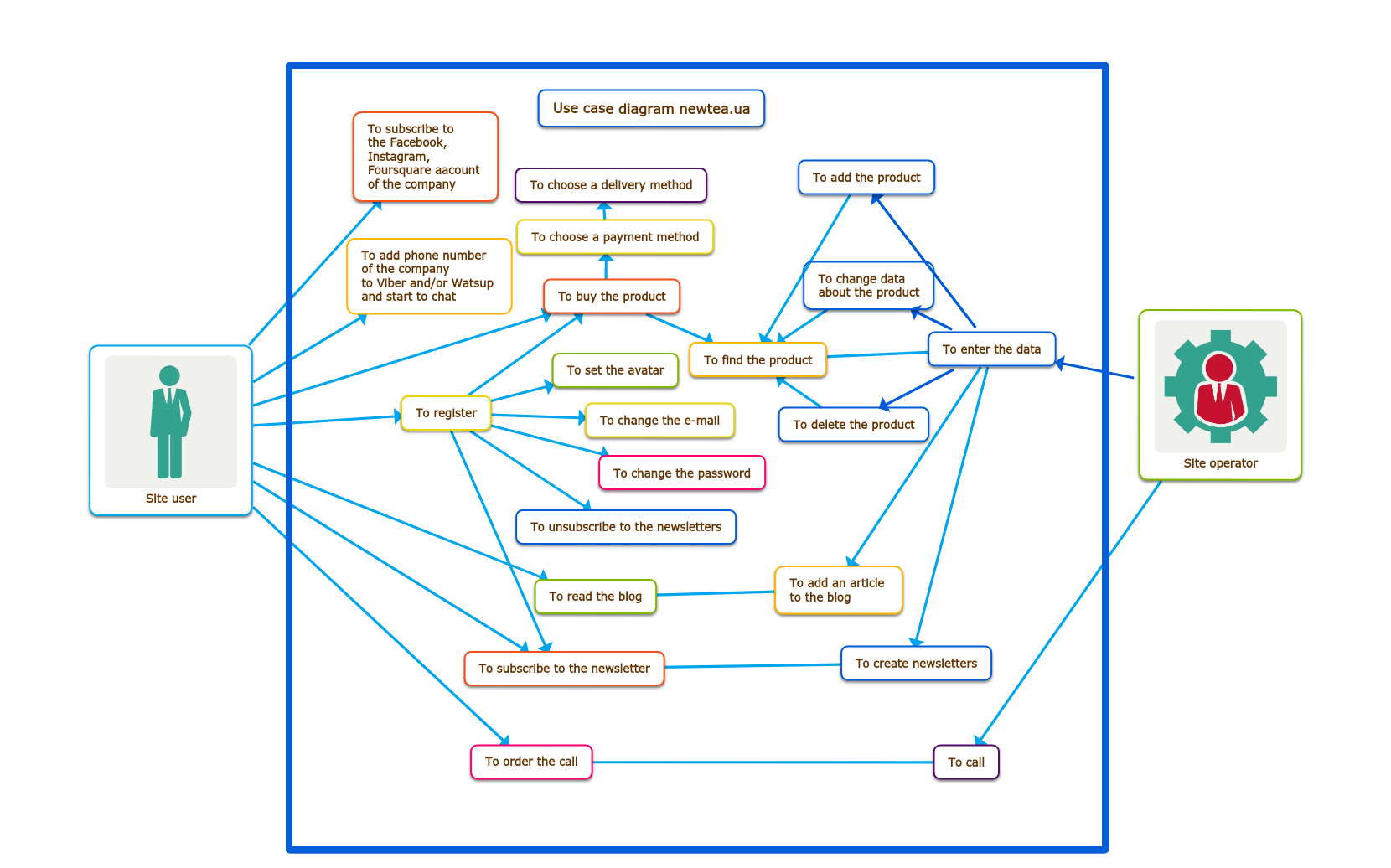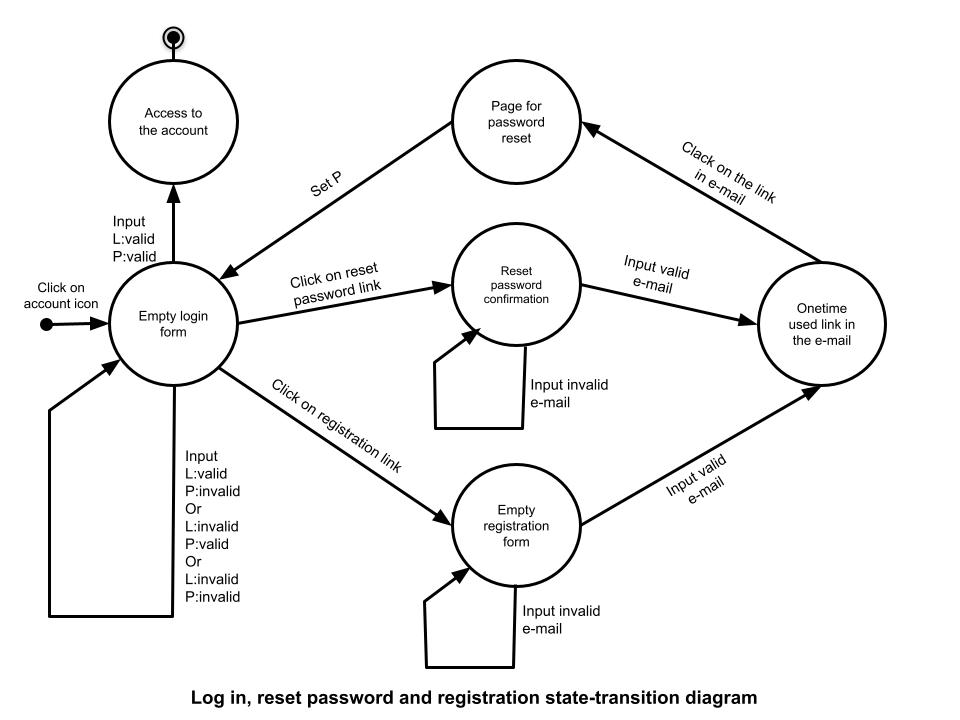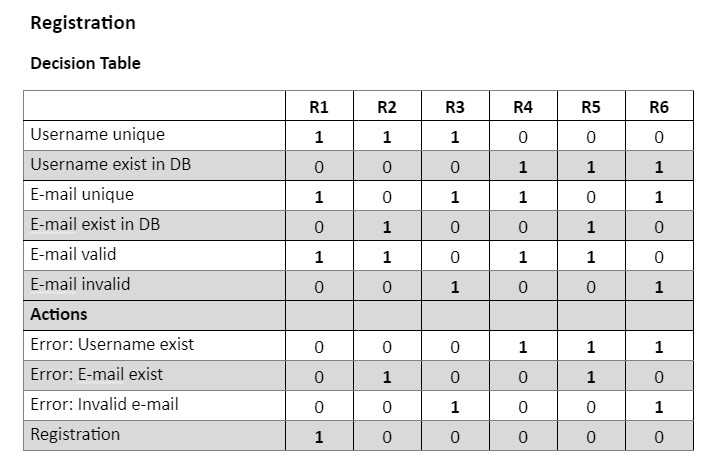Welcome to my portfolio!
I’m Maria Bezobiuk and I’m a junior QA/QC engineer.
I’m glad you are here. It means, you are curious about the level of my skills.
These are examples of my work products with some theory.
Content
- Requirements
- User Stories
- Use Case Diagram
- Use Case
- State-Transition Diagram
- Decision Table
- Checklist
- Test Case
- Defect Report
- API Testing
- Automated Testing
- About Me
Requirements
The requirements should be documented, actionable, measurable, testable, traceable, related to identified business needs or opportunities, and defined to a level of detail sufficient for system design. (Wikipedia)
Requirement is something wanted or needed. And it´s necessary to know exactly what do you want or need to recieve it and nothing else.
Requirement - A provision that contains criteria to be fulfilled. (ISTQB)
Good requirements should have the following characteristics:
- Unambiguous There should be only one way to interpret the requirement.
- Testable (verifiable) Testers should be able to verify whether the requirement is implemented correctly. The test should either pass or fail.
- Clear (concise, terse, simple, precise) Requirements should not contain unnecessary verbiage or information. They should be stated clearly and simply
- Correct If a requirement contains facts, these facts should be true.
- Understandable Requirements should be grammatically correct and written in a consistent style. Standard conventions should be used. The word “shall” should be used instead of “will,” “must,” or “may.”
- Feasible (realistic, possible) The requirement should be doable within existing constraints such as time, money, and available resources.
- Independent To understand the requirement, there should not be a need to know any other requirement.
- Atomic The requirement should contain a single traceable element.
- Necessary A requirement is unnecessary if 1.none of the stakeholders needs the requirement or 2.removing the requirement will not affect the system.
- Implementation-free (abstract) Requirements should not contain unnecessary design and implementation information.
Besides these criteria for individual requirements, three criteria apply to the set of requirements. The set should be:
- Consistent There should not be any conflicts between the requirements. Conflicts may be direct or indirect. Direct conflicts occur when, in the same situation, different behavior is expected. Indirect conflict occurs when requirements do not describe the same functionality, but it is not possible to fulfill both requirements at the same time.
- Nonredundant Each requirement should be expressed only once and should not overlap with another requirement
- Complete A requirement should be specified for all conditions that can occur.
Depending on the format, source, and common characteristics, the requirements can be split into different requirement types. Here are some requirement types that are often used in projects:
- Stakeholder need: a requirement from a stakeholder
- Feature: a service provided by the system, usually formulated by a business analyst; a purpose of a feature is to fulfill a stakeholder need
- Use case: a description of system behavior in terms of sequences of actions
- Supplementary requirement: another requirement (usually nonfunctional) that cannot be captured in use cases
- Test case: a specification of test inputs, execution conditions, and expected results
- Scenario: a specific sequence of actions; a specific path through a use case
One of the best practices of requirements management is to have at least two different levels of requirement abstraction. For example, the Vision contains high-level requirements (features), and the lower levels specifications express the requirements at a detailed level. Senior stakeholders (such as vice presidents) do not have time to read 200 pages of detailed requirements but should be expected to read a 12-page Vision document.
User stories
User story is a requirement written from a user position and can include any functional or non-functional user´s need, the reason behind it, and acceptance criteria.
There are some variants to write down user stories:
- As a <role> I can <capability>, so that <receive benefit>
- In order to <receive benefit> as a <role>, I can <goal/desire>
- As <who> <when> <where>, I want <what> because <why>
File with user stories to the functionality
Use case diagram
The logic of some relationships between the use cases, actors, and systems can be visualised in use case digram. It´s usually simple and shows what behavior is expected in software underdeveloped. We can say, it is a primary form of system or software requirements and helps us design a system from the end user’s perspective.

Use case diagram
Use Case
A use case is a list of actions or event steps typically defining the interactions between a role (known in the Unified Modeling Language (UML) as an actor) and a system to achieve a goal.
A use case is a scenario that describes the use of a system by an actor to accomplish a specific goal.
Use cases help us
- capture the system’s functional requirements from the users’ perspective
- actively involve users in the requirements-gathering process
- provide the basis for identifying major classes and their relationships
- serve as the foundation for developing system test cases
It is a usage scenario for a piece of software; often used in the plural to suggest situations where a piece of software may be useful.
Use cases organize requirements to form a narrative of how users relate to and use a system. Hence they focus on user goals and how interacting with a system satisfies the goals.
Use case flows describe sequences of interactions, and may be worded in terms of a formal model. A use case is intended to provide sufficient detail for it to be understood on its own.
Template for use case:
- Title: “goal the use case is trying to satisfy”
- Main Success Scenario: numbered list of steps
- Step: “a simple statement of the interaction between the actor and a system”
- Extensions: separately numbered lists, one per Extension
- Extension: “a condition that results in different interactions from .. the main success scenario”. An extension from main step 3 is numbered 3a, etc.
Or
- Title (goal)
- Primary Actor
- Scope
- Level
- (Story): the body of the use case is simply a paragraph or two of text, informally describing what happens.
We can highlight such types of use cases:
- System use cases specify the requirements of a system to be developed.
- Business use cases focus on a business organisation instead of a software system. They are used to specify business models and business process requirements in the context of business process reengineering initiatives.
- Essential use cases, also called abstract use cases, describe the potential intents of the actors and how the system addresses these, without defining any sequence or describing a scenario. This practice was developed with the aim of supporting user-centric design and avoiding to induce bias about the user-interface in the early stage of the system specifications.
Use case for registration.
State-Transition Diagram
State-transition diagram (STD) is a visualisation of all the possible states of system, each variant of event from outside the system that cause changes in system, and transition to another state as a result of this event. Also on STD we can see the conditions that must be fulfilled before the transition will occure - guards and actions - activities undertaken during the life of an system.
Only valid state transitions may be utilized.
It is used in the object-oriented modeling and developing as well as use case diagram.
For the tester there are three main questions to test these diagrams:
- Does the diagram follow the rules?
- Is the diagram correct?
- Does everything in this diagram trace back correctly and completely to its predecessor?” and “Is everything in the predecessor reflected completely and correctly in this diagram?”

State Transition Diagram for registration on newtea.ua.
Decision Table
Decision table is a visual way to represent multiple conditions and
actions for them or they combinations.
Essentially it is a structured exercise to formulate requirements when
dealing with complex business rules.
They provide a clear method to verify testing of all pertinent combinations to ensure that all possible conditions, relationships, and constraints are handled by the software under test.

Decision table for registration on newtea.ua.
Checklist
Checklist is a simpliest form of test documentation, I think. It´s a list of test activities needed to be done with checkbox done or not. It can contains a columns ¨Pass/Fail¨ and ¨Coments¨ for tester´s comfort :)
File with checklist for main page testing.
Test Case
Test cases are the main artifacts for testing the software itself.
Test case is a set of preconditions, inputs, actions (where applicable), expected results and postconditions, developed based on test conditions. (ISTQB)
Test cases are typically written by members of the quality assurance (QA) team or the testing team and can be used as step-by-step instructions for each system test. Testing begins once the development team has finished a system feature or set of features. A sequence or collection of test cases is called a test suite.
Test cases define what must be done to test a system, including the steps executed in the system, the input data values that are entered into the system and the results that are expected throughout test case execution. Using test cases allows developers and testers to discover errors that may have occurred during development or defects that were missed during ad hoc tests.
The components of a test case include:
- Test name. A title that describes the functionality or feature that the test is verifying.
- Test ID. Typically a numeric or alphanumeric identifier that QA engineers and testers use to group test cases into test suites.
- Objective. Also called the description, this important component describes what the test intends to verify in one to two sentences.
- References. Links to user stories, design specifications or requirements that the test is expected to verify.
- Prerequisites. Any conditions that are necessary for the tester or QA engineer to perform the test.
- Test setup. This component identifies what the test case needs to run correctly, such as app version, operation system, date and time requirements and security specifications.
- Test steps. Detailed descriptions of the sequential actions that must be taken to complete the test.
- Expected results. An outline of how the system should respond to each test step.
Before writing a test case, QA engineers and testing team members should first determine the scope and purpose of the test. This includes understanding the system features and user requirements as well as identifying the testable requirements.
See more about 5 commonly-used test design techniques on another page.
Defect Reports
Defect or bug report is the basis artifact for improving the software.
Defect or bug report is a documentation of the occurrence, nature, and status of a defect. (ISTQB)
Defect (bug, fault) is a an imperfection or deficiency in a work product where it does not meet its requirements or specifications. (ISTQB)
A good bug report:
- contains the information needed to reproduce and fix problems
- is an efficient form of communication for both bug reporter and bug receiver
- can be and is resolved as fast as possible
- is sent to the person in charge
- is filed in a defined way
- establishes a common ground for collaboration
I have made this defect reports and this in Excel in Ukrainian.
API Testing
Application programming interface (API) is a type of interface in which the components or systems involved exchange information in a defined formal structure. (ISTQB)
Web APIs typically use HTTP for request messages and provide a definition of the structure of response messages. These response messages usually take the form of an XML or JSON file. Both XML and JSON are preferred formats because they present data in a way that’s easy for other apps to manipulate.
REST and SOAP are 2 different approaches to online data transmission. Specifically, both define how to build application programming interfaces (APIs), which allow data to be communicated between web applications. The main difference is that SOAP is a protocol while REST is not.
Simple object access protocol (SOAP) is an official protocol maintained by the World Wide Web Consortium (W3C).
APIs designed with SOAP use XML for their message format and receive requests through HTTP or SMTP. SOAP makes it easier for apps running in different environments or written in different languages to share information.
Representational state transfer (REST) is a set of architectural principles.
When a request for data is sent to a REST API, it’s usually done through hypertext transfer protocol (commonly referred to as HTTP). Once a request is received, APIs designed for REST (called RESTful APIs or RESTful web services) can return messages in a variety of formats: HTML, XML, plain text, and JSON. JSON (JavaScript object notation) is favored as a message format because it can be read by any programming language (despite the name), is human- and machine-readable, and is lightweight. In this way, RESTful APIs are more flexible and can be easier to set up.
REST APIs are lightweight, making them ideal for newer contexts like the Internet of Things (IoT), mobile application development, and serverless computing. SOAP web services offer built-in security and transaction compliance that align with many enterprise needs, but that also makes them heavier. Additionally, many public APIs, like the Google Maps API, follow the REST guidelines.
File with Postman API REST testing.
File with Fiddler API REST testing.
Swagger.io is a simplify API development for users, teams, and enterprises with the Swagger open source and professional toolset. Find out how Swagger can help you design and document your APIs at scale.
SQL
Structured Query Language (SQL) is a domain-specific language used in programming and designed for managing data held in a relational database management system (RDBMS), or for stream processing in a relational data stream management system (RDSMS). (Wikipedia)
A relational DBMS is an implementation of data stores according to the design rules of the relational model.
The relational model designs data structures as relations (tables) with attributes (columns) and the relationship between those relations. The information about one entity of the real world is stored within one row of a table.
This is example of using SQL